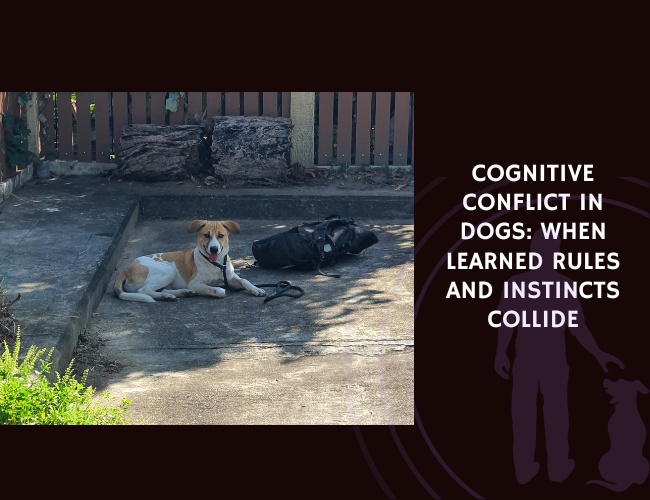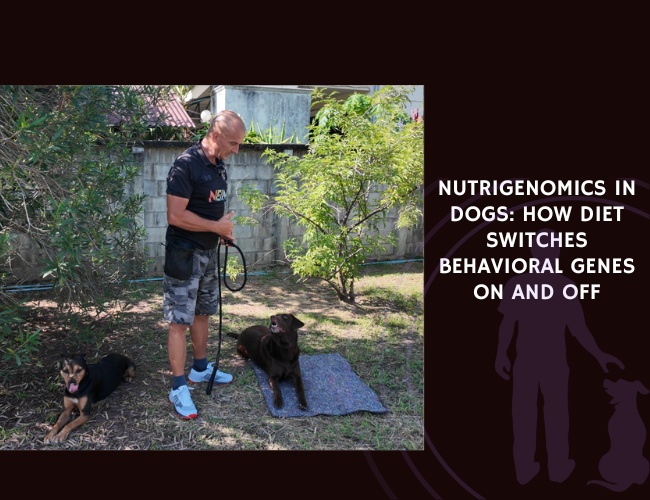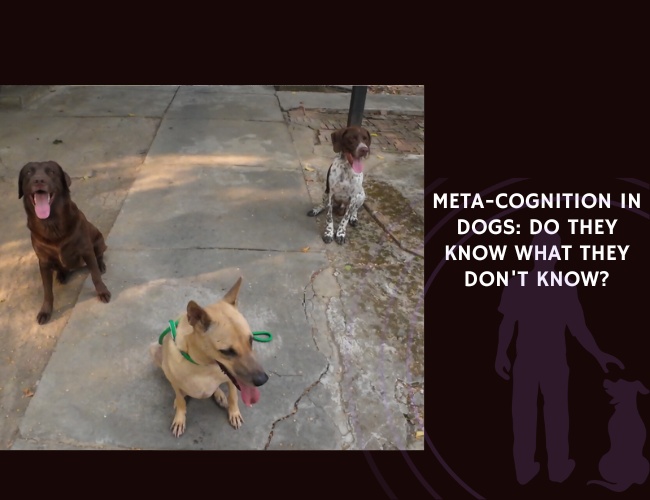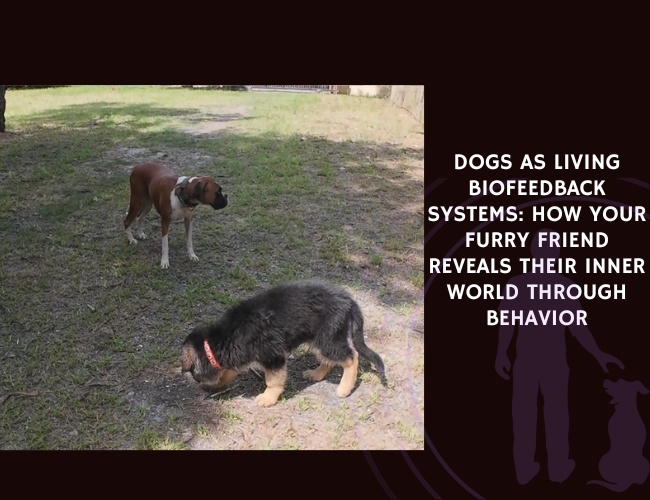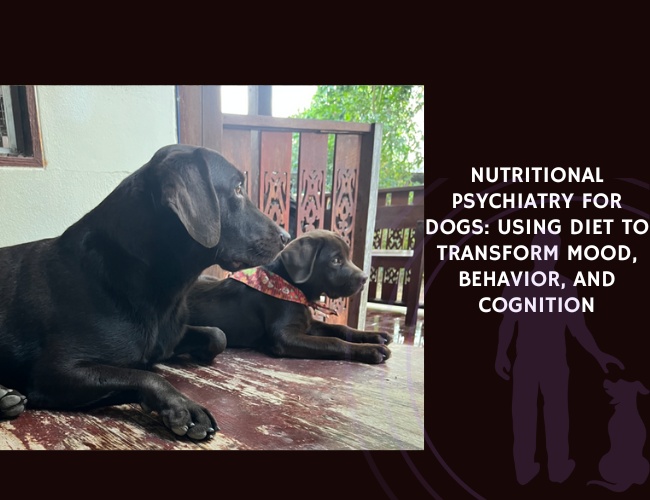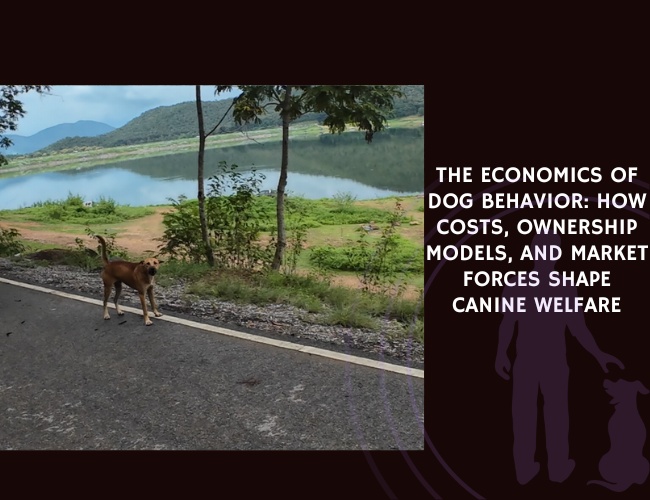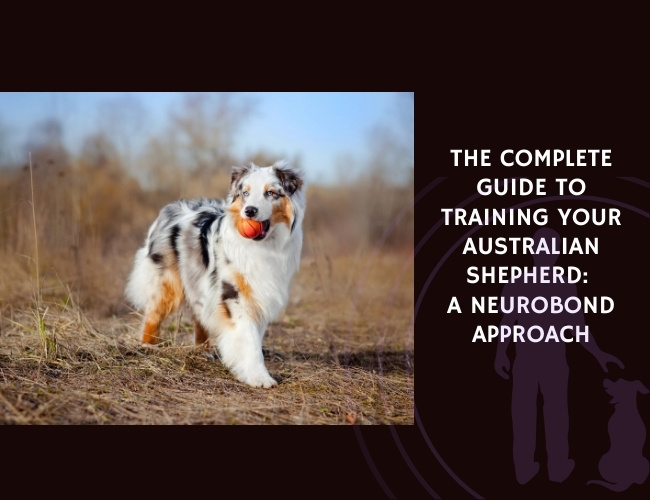Picture this: Your well-trained Labrador sits perfectly at your side during walks, responding to every command with precision. But suddenly, a squirrel darts across the path, and you watch as your dog’s body trembles with internal struggle—torn between the “heel” command they know so well and the ancient hunting instinct coursing through their veins. This moment captures the essence of cognitive conflict in dogs, a fascinating phenomenon where learned behaviors clash with instinctual drives.
This internal battlefield affects every dog, from the tiniest Chihuahua to the most imposing Great Dane. Understanding these conflicts transforms how we approach training, deepens our empathy for our canine companions, and ultimately strengthens the human-dog bond. Let’s explore the science, the struggles, and the solutions that can help your furry friend navigate these challenging moments.
Understanding Cognitive Conflict in Your Dog
When your furry friend experiences cognitive conflict, they’re essentially caught between two competing behavioral impulses. Think of it as the canine equivalent of wanting to eat that extra piece of cake while knowing you’re on a diet—except for dogs, this internal tug-of-war happens between deeply ingrained instincts and the rules they’ve learned to follow.
The neurological battlefield
During these moments, your dog’s brain becomes a fascinating arena of competing signals. The amygdala, responsible for processing emotions and instinctual responses, might be screaming “chase that squirrel!” while the prefrontal cortex—the brain’s executive control center—tries to maintain the learned “stay” behavior. This internal debate creates genuine mental discomfort for your companion.
The key players in your dog’s brain during conflict:
- Amygdala: Processes fear, excitement, and instinctual drives
- Prefrontal cortex: Manages impulse control and learned behaviors
- Hippocampus: Stores memories of past experiences and training
- Hypothalamus: Regulates stress hormones during conflict situations
Research suggests that during cognitive conflict, these brain regions engage in a complex dance of activation and inhibition. The strength of each region’s “vote” determines which behavior ultimately wins out. Factors like breed genetics, individual temperament, past experiences, and current stress levels all influence this neurological decision-making process.
Observable signs of internal struggle
You might notice your dog displaying various behaviors that signal internal conflict:
Physical manifestations:
- Freezing in place, unable to decide which action to take
- Muscle tension, particularly in the shoulders and hindquarters
- Rapid eye movements between the trigger and handler
- Trembling or shaking despite comfortable temperatures
- Changes in ear position—rapidly alternating between alert and relaxed
Displacement behaviors:
- Excessive yawning when not tired
- Lip licking in the absence of food
- Sudden scratching or grooming
- Sniffing the ground intensely without apparent interest
- “Shake offs” as if wet when completely dry
Stress signals:
- Whale eye (showing the whites of their eyes)
- Panting when not hot or after exercise
- Dilated pupils in normal lighting
- Excessive drooling
- Changes in body posture—lowering or stiffening
Behavioral responses:
- Delayed responses to familiar commands
- “Selective deafness” to cues they typically follow
- Offering alternative behaviors (sitting when asked to down)
- Vocalization changes—whining, whimpering, or unusual barking
- Seeking comfort from their handler or attempting to leave
These behaviors aren’t signs of disobedience—they’re windows into your dog’s internal emotional and cognitive processing. Understanding these signals helps us respond with appropriate support rather than frustration. 🧠
Common Triggers: When Instincts Override Training
Understanding what sparks these conflicts helps us become more empathetic and effective partners to our dogs. Let’s explore the most common scenarios where learned rules and natural drives collide.
Recall versus prey drive
Perhaps the most universal example occurs when your dog’s recall training meets their prey drive. That well-practiced “come” command suddenly becomes a whisper against the roar of thousands of years of hunting instinct when a rabbit appears.
Breed-specific considerations:
- Sight hounds (Greyhounds, Whippets, Afghan Hounds): Experience intense visual trigger responses
- Terriers (Jack Russell, Scottish, Fox Terriers): Feel compelled to chase and catch small prey
- Herding breeds (Border Collies, Australian Shepherds): May struggle with moving objects like bikes or running children
- Scent hounds (Beagles, Bloodhounds, Basset Hounds): Can become “nose deaf” when tracking interesting smells
The intensity of this conflict varies based on several factors:
- Genetic predisposition: Some breeds have stronger prey drives due to selective breeding
- Early socialization: Dogs exposed to various animals during critical periods may show better impulse control
- Training history: Consistent recall practice in gradually increasing distractions builds stronger neural pathways
- Individual threshold: Each dog has a unique point where instinct overwhelms training
Sit-stay versus flight response
Fear and anxiety can trigger powerful survival instincts that override even the most solid training. When your dog perceives a threat—whether it’s thunder, fireworks, or an intimidating stranger—their flight response might overpower the “stay” command they typically follow flawlessly.
Common fear triggers that create conflict:
- Environmental: Thunder, fireworks, construction noise, unfamiliar surfaces
- Social: Strangers, other dogs, children, veterinary visits
- Situational: Car rides, grooming, being left alone
- Sensory: Unexpected touches, strong smells, sudden movements
The sympathetic nervous system activation during fear responses floods your dog’s body with stress hormones, making rational decision-making extremely difficult. This biological reality means that expecting perfect obedience during high-fear situations sets both you and your dog up for failure.
Social greeting inhibition versus overarousal
Dogs are inherently social creatures, and when they encounter other dogs or beloved humans, their excitement can create intense internal conflict. You’ve taught them to sit politely for greetings, but their whole body vibrates with the desire to jump, play, and investigate.
Factors that intensify greeting conflicts:
- Age: Puppies and adolescent dogs struggle more with impulse control
- Social deprivation: Dogs with limited social opportunities may overreact during greetings
- Breed temperament: Naturally exuberant breeds face greater challenges
- Past reinforcement: If jumping was previously rewarded (even inadvertently), the conflict intensifies
- Environmental energy: Busy, stimulating environments make calm greetings harder

Territory protection versus social training
Many dogs experience conflict between their natural guarding instincts and trained social behaviors. This becomes particularly challenging when:
- Visitors enter the home
- Delivery people approach the property
- Other dogs pass by during walks
- Resources (food, toys, favorite spots) are present
The conflict between “protect” and “be friendly” can create significant stress, especially for breeds with strong guarding tendencies like German Shepherds, Rottweilers, or Mastiffs.
Food drive versus impulse control
Mealtime and treat situations often trigger conflicts between your dog’s survival instinct to consume available food and trained behaviors like “wait” or “leave it.” This conflict intensifies with:
- High-value foods
- Competition from other pets
- Previous food scarcity (common in rescue dogs)
- Medical conditions affecting appetite
The Impact on Training and Behavior
Cognitive conflicts don’t just create momentary hesitation—they can have lasting effects on your dog’s learning journey and emotional wellbeing. Understanding these impacts helps us adjust our training approaches for better outcomes.
The learning plateau effect
When dogs repeatedly experience unresolved cognitive conflicts, they may enter a state of learned helplessness. Imagine trying to please someone when you genuinely don’t understand what they want—eventually, you might stop trying altogether.
Signs of learned helplessness in dogs:
- Decreased enthusiasm for training sessions
- Slower response times to known commands
- Reduced offering of behaviors
- Apparent “stubbornness” or disengagement
- Seeking to end training sessions early
This isn’t laziness or defiance—it’s emotional exhaustion from constant internal struggle. Dogs in this state need patient rebuilding of confidence, not increased pressure.
Stress accumulation and behavioral fallout
Each unresolved conflict adds to your dog’s stress load, creating a cumulative effect that impacts overall behavior and wellbeing.
Short-term effects:
- Increased reactivity to triggers
- Difficulty concentrating during training sessions
- Temporary regression in known behaviors
- Changes in appetite or sleep patterns
- Increased attention-seeking or avoidance behaviors
Long-term consequences:
- Development of anxiety-related behaviors
- Weakened handler-dog relationship trust
- Chronic stress-related health issues
- Reduced quality of life
- Potential for fear-based aggression
The dopamine system, crucial for reward-based learning, becomes disrupted when dogs can’t predict outcomes reliably. This reward prediction error creates frustration that compounds with each conflicting situation, potentially leading to:
- Reduced motivation for learning
- Difficulty forming new behavioral patterns
- Increased likelihood of reverting to instinctual behaviors
- General behavioral unpredictability
The generalization challenge
Dogs struggling with cognitive conflicts often have difficulty generalizing behaviors across contexts. A dog might perform perfectly in familiar environments but struggle when:
- Training locations change
- Distractions increase
- Handler stress levels rise
- Environmental pressures mount
This context-dependency creates additional stress as dogs try to navigate when rules apply and when instincts might be acceptable.
Building Conflict Resolution Skills
The good news? Dogs are remarkably adaptable learners who can develop strategies to navigate these internal conflicts. With thoughtful training approaches, we can help them build the cognitive flexibility needed to manage competing impulses.
Impulse control foundations
Start with exercises that strengthen your dog’s ability to pause and think before acting. These foundational skills create neural pathways that support decision-making during conflicts.
“Leave It” progression protocol:
- Stage 1: Start with boring objects (like a pen) on the ground
- Stage 2: Progress to low-value treats in your closed hand
- Stage 3: Open hand with treats, covering if needed
- Stage 4: Treats on the ground with foot ready to cover
- Stage 5: Moving treats (rolled or tossed gently)
- Stage 6: Real-world items during walks
- Stage 7: High-value items with distance and duration
Duration training exercises:
- The Relaxation Protocol: Systematically building calm duration
- Stay with distractions: Gradually increasing environmental challenges
- Wait at thresholds: Building impulse control at doors and gates
- Food bowl exercises: Teaching patience around meals
- Toy timeouts: Pausing play on cue
Choice-based games that build decision-making skills:
- Two-toy choice: Let your dog choose between toys, rewarding any choice
- Path selection: Set up two paths with different rewards, allowing exploration
- Behavior options: Cue “do something” and reward any offered behavior
- Consent-based petting: Teaching dogs to solicit or decline attention
- Puzzle feeders: Encouraging problem-solving and patience
Emotional conditioning strategies
Address the emotional component of conflicts by creating new associations and building confidence.
Counterconditioning protocols:
- Identify the trigger at sub-threshold distance
- Pair trigger appearance with high-value rewards
- Gradually decrease distance as comfort increases
- Add duration and intensity systematically
- Generalize to various contexts
- Maintain positive associations long-term
Confidence-building exercises:
- Novel object exploration: Rewarding investigation of new items
- Surface work: Walking on different textures and unstable surfaces
- Parkour basics: Building body awareness and bravery
- Scent work: Developing focus and problem-solving
- Trick training: Creating success experiences
Systematic desensitization approach:
- Create a hierarchy of trigger intensity
- Start with least challenging scenarios
- Progress only when stress signals decrease
- Incorporate choice and agency
- Monitor for cumulative stress effects
Contextual generalization
Practice commands in increasingly distracting environments to help your dog understand that rules apply universally.
Environmental progression plan:
- Home – Quiet room: Baseline behavior establishment
- Home – Different rooms: Mild context change
- Yard or patio: Increased sensory input
- Quiet street: Novel environment, low distraction
- Busy neighborhood: Moderate distractions
- Park perimeter: High distraction potential
- Dog-friendly stores: Indoor novel environments
- Training classes: Controlled high-distraction setting
The 3D’s of training progression:
- Duration: How long can they maintain the behavior?
- Distance: How far from distractions can they perform?
- Distraction: What level of competing stimuli can they handle?
Always adjust only one variable at a time to set your dog up for success.
Supporting Your Dog Through Conflicts
When you notice your dog experiencing cognitive conflict, your response can either escalate their stress or help them navigate the challenge successfully.
In-the-moment management
Your immediate response during a conflict situation shapes your dog’s future behavior and stress levels.
The STOP protocol:
- Scan: Quickly assess the situation and your dog’s stress level
- Take a breath: Center yourself to avoid adding tension
- Options: Consider available management strategies
- Proceed: Act calmly with your chosen approach
Effective intervention strategies:
- Increase distance from triggers using happy talk and movement
- Use body blocking to break visual contact with triggers
- Offer an alternative behavior they can succeed at
- Create movement to discharge tension (sniffing walks)
- Use high-value rewards to rebuild positive associations
What to avoid during conflicts:
- Punishment or corrections that increase stress
- Forcing compliance through physical manipulation
- Repeatedly giving commands they can’t follow
- Showing frustration through body language or tone
- Removing all agency from your dog
Pulled. Torn. Rising.
Instinct pulls the body.
A flash of movement—a squirrel, a ball, a sudden gesture—and your dog’s muscles respond before thought has time to intervene. This isn’t disobedience. It’s legacy. Buried deep in the nervous system lie echoes of survival drives: chase, avoid, investigate. Even the most obedient dog still carries the silent drumbeat of its ancestors. What looks like hesitation is often a split-second battle between primal urgency and learned restraint.
Training tears at impulse.
You’ve taught the rules. Sit means sit. Come means come. But what happens when those commands collide with instinct, fear, or pure excitement? That moment of pause—tail quivering, eyes wide, body rigid—is not confusion. It’s a dog caught in contradiction. They want to obey, but their body says move. Your voice competes with thousands of years of evolution. And that’s when frustration builds—for both of you.
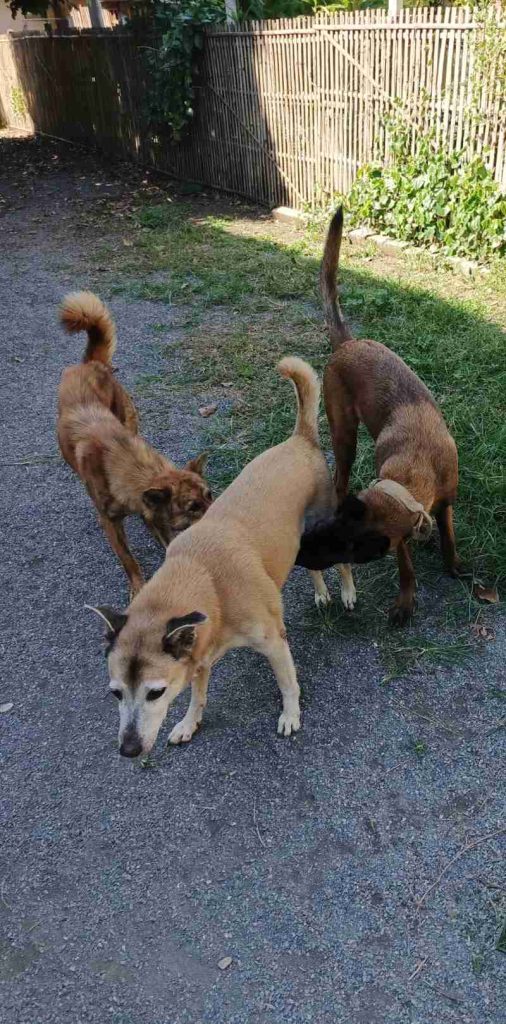
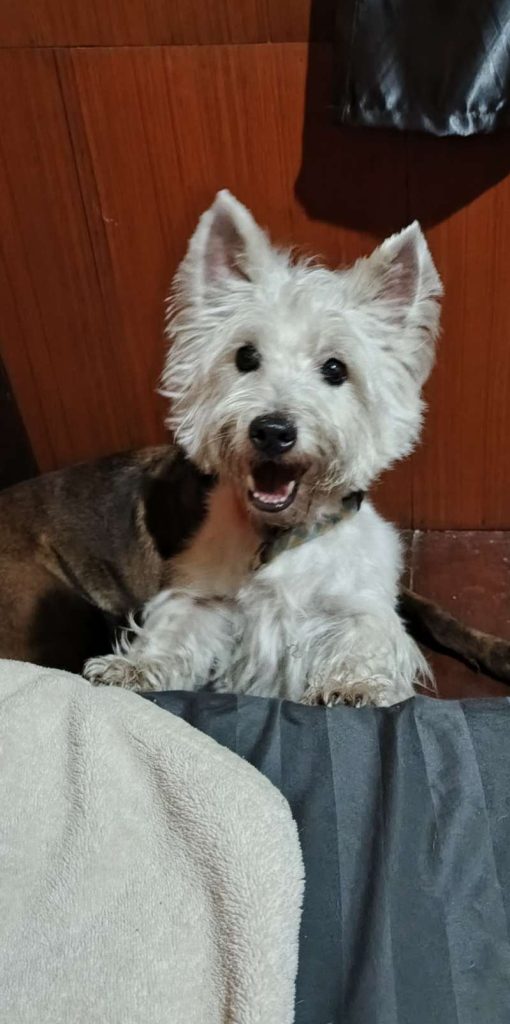
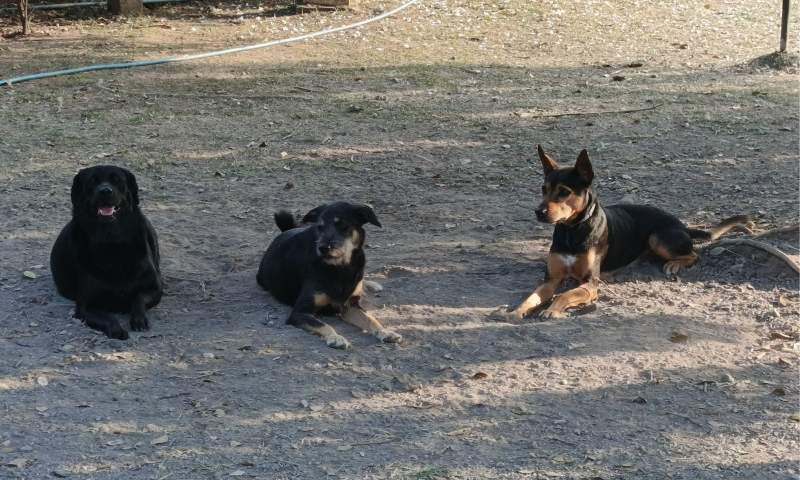
Cognition rises through conflict.
But here’s the beauty: dogs can learn to choose. Not suppress instinct, but regulate it. Through practice, trust, and gentle exposure, they begin to pause, weigh, respond. That trembling moment becomes shorter. The pull becomes a glance. The sit holds firm. Not from fear, but from decision. And that’s not just training. That’s growth. 🧡
Long-term strategies
Building resilience against cognitive conflicts requires consistent, thoughtful approaches over time.
Foundation building:
- Trust account deposits: Every positive interaction builds trust
- Predictability: Consistent routines reduce overall stress
- Agency: Allowing choices when possible builds confidence
- Success setups: Engineering situations for easy wins
- Recovery time: Respecting your dog’s need to decompress
Progressive challenge structure:
- Master basic skills in zero-distraction environments
- Add one mild distraction element
- Return to easier versions after any struggle
- Celebrate small improvements enthusiastically
- Track progress to identify patterns
- Adjust expectations based on individual capacity
Breed-specific considerations: Work with, not against, your dog’s genetic tendencies:
- Herding breeds: Channel drive into appropriate activities
- Hunting breeds: Provide sanctioned search and chase games
- Guardian breeds: Respect their protective nature while building social skills
- Companion breeds: Address separation-related conflicts gently
- Working breeds: Ensure adequate mental stimulation to reduce conflicts
Remember, every dog’s cognitive capacity and emotional resilience differ. What challenges one dog might be manageable for another. 🐾
The Neurobiology Behind the Struggle
Understanding the brain science helps us appreciate the genuine difficulty our dogs face during these conflicts. The interplay between different brain regions creates a complex decision-making process that goes far beyond simple “obedience” or “disobedience.”
The dopamine dilemma
When outcomes don’t match expectations, dopamine signaling becomes disrupted. This neurotransmitter, essential for learning and motivation, plays several crucial roles:
Dopamine’s functions in dog behavior:
- Reward prediction and anticipation
- Motivation to perform behaviors
- Learning consolidation
- Emotional regulation
- Movement initiation
During cognitive conflicts, the dopamine system experiences what scientists call “reward prediction error.” Your dog expects one outcome (satisfaction from chasing) but experiences another (frustration from restraint). This mismatch creates genuine neurological discomfort.
How prediction errors affect behavior:
- Initial confusion and hesitation
- Increased stress hormone release
- Difficulty accessing learned behaviors
- Potential for frustration-based reactions
- Long-term changes in motivation
Stress hormones and decision-making
The cascade of stress hormones during conflicts significantly impacts your dog’s ability to think clearly and access trained behaviors.
The stress response cascade:
- Trigger recognition: Amygdala identifies conflict situation
- HPA axis activation: Hypothalamic-pituitary-adrenal system engages
- Cortisol release: Stress hormone floods the system
- Prefrontal suppression: Executive function decreases
- Instinct dominance: Primitive behaviors become more likely
Cortisol’s effects on learning:
- Impaired memory formation
- Reduced impulse control
- Increased emotional reactivity
- Difficulty with behavior flexibility
- Prolonged recovery time needed
This biological reality means that dogs in conflict literally cannot access their training as effectively as when calm. It’s not willful disobedience—it’s neurochemistry.
The role of neurotransmitter balance
Beyond dopamine and stress hormones, other neurotransmitters influence conflict resolution:
Serotonin: The “feel-good” neurotransmitter
- Affects impulse control and emotional stability
- Lower levels correlate with increased reactivity
- Can be influenced by diet, exercise, and environment
- Takes time to rebalance after chronic stress
GABA (Gamma-Aminobutyric Acid): The calming neurotransmitter
- Inhibits excessive neural firing
- Helps regulate anxiety and fear responses
- Can be depleted by chronic stress
- Supports better decision-making when balanced
Norepinephrine: The alertness neurotransmitter
- Heightens during stress and excitement
- Can override trained behaviors when excessive
- Affects attention and focus
- Requires management through environmental control
Neuroplasticity and hope
The remarkable news is that dog brains remain plastic throughout life. This means:
- New neural pathways can be built at any age
- Repeated positive experiences reshape responses
- Conflicts can become less intense over time
- Recovery from past trauma is possible
- Training truly can overcome genetics—with patience
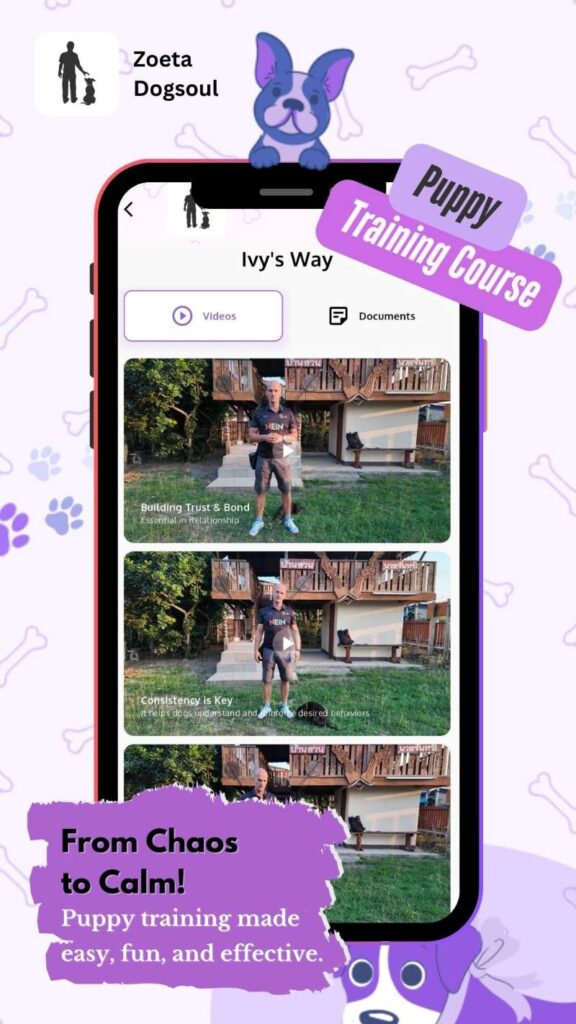
Creating a Conflict-Aware Training Environment
Successful training acknowledges and works with these internal conflicts rather than against them. Here’s how to structure your approach for maximum success while minimizing stress.
Environmental design for success
Your training environment significantly impacts your dog’s ability to manage conflicts.
Physical space considerations:
- Distance management: Always have room to increase distance from triggers
- Visual barriers: Use parked cars, trees, or training screens
- Escape routes: Never train in confined spaces during conflict work
- Surface quality: Ensure good footing for confident movement
- Weather factors: Avoid extreme conditions that add stress
Sensory environment optimization:
- Minimize competing sounds during initial training
- Consider lighting—some dogs are more reactive in dim conditions
- Be aware of scent distractions (other animals, food sources)
- Monitor for trigger stacking (multiple stressors at once)
- Create calm zones for decompression between challenges
Progressive challenge building
Structure your training to build success gradually while respecting your dog’s current capabilities.
The 5-Stage Training Model:
Stage 1: Foundation (No distractions)
- Perfect the behavior in a quiet, familiar space
- Build strong reward history
- Ensure handler mechanics are smooth
- Create muscle memory for both dog and human
- Establish clear communication patterns
Stage 2: Mild challenges (Single, predictable distractions)
- Add one low-level distraction at a time
- Maintain high success rate (80% or higher)
- Use distance to manage difficulty
- Reward generously for correct choices
- Return to Stage 1 if stress appears
Stage 3: Moderate complexity (Multiple or moving distractions)
- Combine different types of mild distractions
- Add movement to static distractions
- Practice in slightly novel environments
- Begin reducing food reward frequency
- Introduce real-world scenarios gradually
Stage 4: Real-world application (Unpredictable environments)
- Practice in everyday situations
- Handle unexpected distractions calmly
- Use management tools as needed
- Maintain reasonable expectations
- Celebrate partial successes
Stage 5: Maintenance (Lifelong practice)
- Regular practice in various contexts
- Periodic return to easier stages
- Adjust for age-related changes
- Keep training positive and fun
- Monitor for stress accumulation
The power of choice
Incorporating choice into training sessions increases engagement and helps dogs develop decision-making skills.
Choice-based training principles:
- Offer options whenever safely possible
- Reward thinking, not just compliance
- Build consent into handling exercises
- Allow exploration within boundaries
- Respect communication attempts
Practical choice exercises:
- Station training: Dog chooses when to engage
- Cooperative care: Dog indicates readiness for grooming/handling
- Play selection: Multiple toy options available
- Route choices: Different walking paths offered
- Break requests: Teaching dogs to communicate need for space
Benefits of choice-based approaches:
- Increased engagement and motivation
- Better stress management
- Improved problem-solving skills
- Stronger human-dog communication
- Reduced likelihood of shutdown behaviors
Training session structure
Design sessions to maximize learning while minimizing conflict stress.
Optimal session components:
- Warm-up (2-5 minutes): Easy, known behaviors to build confidence
- New skill work (5-10 minutes): Focus on one concept
- Proofing (3-5 minutes): Add mild distractions to known behaviors
- Play break (2-3 minutes): Discharge any tension
- Cool-down (2-3 minutes): Calming exercises or massage
Session timing considerations:
- Keep sessions short (15-20 minutes maximum)
- End on a positive note always
- Allow processing time between sessions
- Avoid training when dog is over-tired or over-aroused
- Consider individual attention spans
Recovery and integration:
- Provide downtime after challenging sessions
- Allow sniffing and exploration
- Avoid trigger exposure immediately after training
- Monitor for delayed stress responses
- Adjust next session based on recovery
When Professional Support Helps
Some cognitive conflicts require expert guidance to resolve effectively. Recognizing when to seek help is a sign of responsible dog guardianship, not failure.
Indicators for professional intervention
Consider consulting a certified dog behavior professional when:
Behavioral indicators:
- Conflicts escalate to aggression (towards humans or dogs)
- Extreme anxiety or panic responses occur
- Shutdown behaviors persist despite intervention
- Self-injurious behaviors develop
- Resource guarding intensifies
Training challenges:
- Traditional approaches yield no progress after 6-8 weeks
- Regression occurs despite consistent practice
- Multiple behavior issues compound
- Safety concerns arise
- Handler confidence erodes
Quality of life impacts:
- Dog shows chronic stress signs
- Normal activities become impossible
- Medical issues develop from stress
- Human-dog bond deteriorates
- Household harmony disrupts
Types of professionals
Understanding different professional roles helps you find appropriate support:
Certified Dog Behavior Consultant (CDBC):
- Extensive education in behavior science
- Can address complex behavior issues
- Works with veterinary support
- Creates comprehensive behavior plans
- Does not prescribe medication
Veterinary Behaviorist (DACVB):
- Veterinarian with behavior specialty
- Can prescribe behavioral medications
- Addresses medical components
- Handles severe cases
- Provides integrated treatment
Certified Professional Dog Trainer (CPDT):
- Focuses on training techniques
- Helps with basic conflicts
- Provides skill-building support
- May refer complex cases
- Offers group or private sessions
Working with professionals
Maximize the benefit of professional support through active participation:
Preparation for consultation:
- Document specific conflict scenarios
- Video examples when possible
- List all tried interventions
- Gather medical history
- Prepare honest lifestyle assessment
During professional support:
- Ask questions freely
- Request clarification when needed
- Be honest about limitations
- Follow protocols consistently
- Communicate struggles promptly
Integration of professional guidance:
- Practice between sessions
- Keep detailed progress notes
- Adjust expectations realistically
- Celebrate small improvements
- Maintain long-term perspective
Advanced Strategies for Complex Conflicts
Some dogs experience multiple, layered conflicts that require sophisticated approaches beyond basic training. These strategies address the deeper neurological and emotional components.
Neurological support strategies
Supporting your dog’s nervous system can improve their capacity to handle conflicts.
Environmental enrichment protocols:
- Scent enrichment: Hide treats, use different herbs, rotate toys
- Auditory enrichment: Calming music, nature sounds, silence variation
- Tactile enrichment: Different textures, surfaces, temperatures
- Cognitive enrichment: Puzzle toys, training games, novel experiences
- Social enrichment: Controlled positive interactions
Nutritional support considerations:
- Omega-3 fatty acids for brain health
- B-vitamins for nervous system function
- Avoiding high-sugar treats that cause energy spikes
- Consistent feeding schedules for stability
- Adequate hydration for optimal function
Exercise and arousal regulation:
- Balance physical exercise with calm activities
- Avoid over-stimulation before training
- Include sniffing and exploration time
- Practice arousal up/down games
- Monitor for exercise-induced stress
Combining modalities
Integrative approaches often yield better results than single-method interventions.
Complementary support options:
- Tellington TTouch: Body work for nervous system regulation
- Canine massage: Releases physical tension from conflicts
- Acupressure: Specific points for calming and focus
- Aromatherapy: Calming scents (with professional guidance)
- Sound therapy: Specific frequencies for relaxation
Behavioral medication considerations: Working with a veterinary behaviorist might include:
- Short-term anxiety management during training
- Long-term support for chronic stress
- Supplements vs. prescription options
- Monitoring and adjustment protocols
- Integration with behavior modification
Technology aids:
- Calming pheromone diffusers
- Anxiety wraps or pressure garments
- White noise machines for sound sensitivity
- Activity monitors to track stress patterns
- Training apps for consistency
Building resilience
Long-term success requires building your dog’s overall resilience to stress and conflict.
The resilience pyramid:
- Foundation: Safety, predictability, and trust
- Physical health: Nutrition, exercise, and medical care
- Emotional security: Consistent handling and clear communication
- Cognitive development: Learning opportunities and problem-solving
- Peak performance: Handling conflicts with confidence
Resilience-building activities:
- Confidence courses: Simple obstacles to navigate
- Novel experiences: Controlled exposure to new situations
- Success chains: Linking multiple behaviors smoothly
- Recovery practice: Learning to bounce back from stress
- Choice exercises: Building decision-making skills
Stress inoculation training:
- Expose to mild stressors in controlled ways
- Pair stress with positive outcomes
- Gradually increase challenge levels
- Always ensure recovery time
- Build library of coping strategies
The Human Factor: Managing Your Own Responses
Your emotional state, body language, and responses significantly impact your dog’s ability to navigate cognitive conflicts. Understanding and managing your own reactions is crucial for success.
Recognizing handler influence
Dogs are remarkably attuned to human emotions and often mirror our stress levels.
How handlers inadvertently increase conflicts:
- Tensing up when anticipating problems
- Holding breath during challenging moments
- Tightening leash unconsciously
- Projecting anxiety through body language
- Verbal tension or frustrated tones
The feedback loop effect: When handlers stress, dogs stress, creating an escalating cycle:
- Handler anticipates conflict
- Body language changes subtly
- Dog detects handler tension
- Dog’s stress increases
- Conflict becomes more likely
- Handler tension validates dog’s concern
Developing handler skills
Building your own emotional regulation improves your dog’s outcomes.
Mindfulness techniques for handlers:
- Breath awareness: Notice and regulate breathing patterns
- Body scanning: Release physical tension regularly
- Present-moment focus: Avoid anticipating problems
- Emotional check-ins: Acknowledge your feelings without judgment
- Grounding exercises: Use sensory awareness to stay calm
Communication clarity:
- Use consistent verbal cues
- Maintain neutral tone even under stress
- Avoid repeating commands frantically
- Practice clear body language
- Celebrate successes genuinely
Building handler confidence:
- Practice mechanical skills without dog present
- Visualize successful outcomes
- Keep training journal for perspective
- Seek support from other handlers
- Remember progress isn’t always linear
Creating partnership dynamics
The strongest human-dog teams work as partners navigating challenges together.
Partnership principles:
- Mutual trust and respect
- Clear communication both ways
- Shared problem-solving approach
- Flexibility when plans change
- Celebration of team successes
Reading your dog’s communication:
- Learn individual stress signals
- Notice subtle preference indicators
- Respect requests for space
- Acknowledge try efforts
- Respond to check-ins appropriately
Strengthening the partnership:
- Engage in non-training activities together
- Practice relaxation as a team
- Build positive associations with each other
- Create rituals for connection
- Maintain playfulness in interactions
Breed-Specific Conflict Patterns
While all dogs can experience cognitive conflicts, certain breeds face predictable challenges based on their genetic heritage and selective breeding purposes. Understanding these patterns helps tailor interventions effectively.
Herding breeds conflicts
Breeds like Border Collies, Australian Shepherds, and Corgis face unique challenges:
Common conflict scenarios:
- Movement control vs. social politeness
- Stalking behaviors vs. recall commands
- Nipping impulses vs. gentle interaction rules
- Intense focus vs. disengagement needs
- Territory monitoring vs. relaxation
Tailored strategies:
- Provide herding-specific outlets (treibball, herding lessons)
- Teach “all done” cues for work cessation
- Build off-switches through relaxation protocols
- Channel focus into appropriate tasks
- Respect their need for job-like activities
Hunting breed conflicts
Breeds developed for hunting face intense conflicts between ancient drives and modern expectations.
Scent hounds (Beagles, Bloodhounds, Basset Hounds):
- Primary conflicts: Following scent trails vs. recall/heel commands
- Challenge intensifiers: Once “on scent,” become selectively deaf
- Management strategies:
- Long lines in unsecured areas
- Scent work as appropriate outlet
- High-value rewards that compete with scents
- Practice recalls before nose hits ground
- Accept some limitations gracefully
Sight hounds (Greyhounds, Whippets, Salukis):
- Primary conflicts: Chase instinct vs. staying close
- Challenge intensifiers: Movement triggers are instantaneous
- Management strategies:
- Secure fencing always required
- Muzzle training for small animal safety
- Flirt pole play for chase outlet
- Focus on management over modification
- Build strong “watch me” before triggers appear
Retrievers (Labradors, Golden Retrievers, Chesapeake Bay):
- Primary conflicts: Carrying/holding items vs. “drop it” commands
- Challenge intensifiers: Soft mouth instincts make releasing difficult
- Management strategies:
- Structured retrieve games with rules
- Trade protocols for valued items
- Carry approved items on walks
- Build “hold” and “give” as separate cues
- Respect their need to have something in mouth
Guardian breed conflicts
Protection breeds face particularly intense conflicts in social situations.
Livestock guardians (Great Pyrenees, Anatolian Shepherds, Maremmas):
- Primary conflicts: Independence vs. handler compliance
- Challenge intensifiers: Bred to work without human direction
- Management strategies:
- Respect their decision-making abilities
- Build cooperation vs. obedience
- Allow perimeter checking behaviors
- Focus on safety boundaries vs. precision
- Accept their nocturnal alertness
Personal protection breeds (German Shepherds, Rottweilers, Dobermans):
- Primary conflicts: Assessing threats vs. social expectations
- Challenge intensifiers: Hypervigilance in public spaces
- Management strategies:
- Clear on/off duty signals
- Structured socialization with choice
- Respect their spatial needs
- Build handler trust for decisions
- Provide appropriate protection sports
Terrier conflicts
Terriers experience some of the most intense cognitive conflicts due to their tenacious temperaments.
Common terrier challenges:
- Prey drive vs. small animal coexistence
- Independence vs. recall reliability
- Persistence vs. “leave it” commands
- Alert barking vs. quiet requirements
- Resource intensity vs. sharing expectations
Breed-specific strategies:
- Channel tenacity into appropriate games
- Use management for non-negotiable safety
- Build trade protocols early and strongly
- Respect their “opinion” while maintaining boundaries
- Provide digging and hunting outlets
Toy breed conflicts
Small breeds face unique conflicts often overlooked due to their size.
Common toy breed challenges:
- Fear vs. social expectations (size vulnerability)
- Resource guarding vs. sharing (survival instinct)
- Alert barking vs. apartment living
- Lap seeking vs. independence training
- Temperature regulation vs. outdoor requirements
Size-appropriate strategies:
- Respect genuine safety concerns
- Build confidence through choice
- Use elevation for security
- Maintain training standards despite size
- Address, don’t dismiss, their conflicts
Long-Term Management and Maintenance
Successfully managing cognitive conflicts isn’t a one-time achievement—it requires ongoing attention and adaptation throughout your dog’s life.
Life stage considerations
Different life stages bring different conflict challenges and capacities.
Puppy phase (8 weeks – 6 months):
- Challenges: Everything is new and potentially conflicting
- Opportunities: Maximal neuroplasticity for learning
- Focus areas:
- Positive exposure to various stimuli
- Building foundation behaviors
- Preventing conflict escalation
- Creating positive associations
- Establishing communication patterns
Adolescence (6 months – 2 years):
- Challenges: Hormonal changes intensify conflicts
- Opportunities: Developing adult coping strategies
- Focus areas:
- Maintaining consistency despite regression
- Adjusting expectations for teenage brain
- Providing appropriate outlets
- Strengthening impulse control
- Navigating social maturity
Adult maintenance (2 – 7 years):
- Challenges: Established patterns may need updating
- Opportunities: Peak learning and performance ability
- Focus areas:
- Regular practice in various contexts
- Preventing complacency
- Addressing new conflicts as they arise
- Maintaining physical and mental fitness
- Adjusting for lifestyle changes
Senior adjustments (7+ years):
- Challenges: Physical or cognitive changes affect ability
- Opportunities: Lifetime of trust to build upon
- Focus areas:
- Modifying expectations compassionately
- Accommodating sensory changes
- Managing pain or discomfort effects
- Maintaining quality of life
- Celebrating capabilities rather than focusing on losses
Environmental management strategies
Long-term success often depends more on smart management than perfect training.
Home environment optimization:
- Create safe spaces for decompression
- Use baby gates for separation options
- Establish predictable routines
- Minimize trigger exposure during rest
- Design success into daily life
Public space navigation:
- Choose walking routes strategically
- Visit dog-friendly venues during off-peak times
- Always have exit strategies
- Use visual barriers effectively
- Communicate needs to others clearly
Social situation planning:
- Prepare visitors in advance
- Create protocols for greetings
- Have management tools ready
- Respect your dog’s limits
- Advocate for your dog’s needs
Progress tracking and adjustment
Documenting your journey helps identify patterns and celebrate growth.
Effective tracking methods:
- Behavior diary: Note daily successes and challenges
- Video progress: Monthly recordings for comparison
- Trigger intensity scale: Rate reactions 1-10
- Success rate calculation: Track percentage of appropriate responses
- Stress signal inventory: Monitor overall anxiety levels
Using data for decisions:
- Identify trigger patterns
- Recognize improvement trends
- Spot regression early
- Adjust protocols based on evidence
- Celebrate documented progress
When to modify approaches:
- Three weeks without progress
- Increased stress signals
- New conflicts emerging
- Life circumstances changing
- Age-related needs developing
The Science of Success: Understanding What Works
Research in canine cognition and behavior continues to evolve our understanding of how dogs navigate cognitive conflicts. Let’s explore the evidence-based principles that underpin successful interventions.
Learning theory applications
Understanding how dogs learn helps us create more effective training protocols.
Classical conditioning in conflict resolution:
- Changes emotional responses to triggers
- Creates new associations with previously problematic stimuli
- Works below conscious level
- Requires consistency and repetition
- Most effective when dog is sub-threshold
Operant conditioning considerations:
- Reinforces chosen behaviors
- Requires dog to be cognitively available
- May be impaired during high conflict
- Works best with high-value rewards
- Needs careful timing for effectiveness
The intersection point: Cognitive conflicts occur where classical and operant conditioning intersect:
- Emotional responses (classical) compete with trained behaviors (operant)
- Success requires addressing both components
- Emotional state affects learning capacity
- Building positive associations supports behavioral choices
Neuroscience insights
Recent research reveals fascinating insights about the canine brain during conflicts.
Mirror neuron implications:
- Dogs mirror human emotional states
- Calm handlers create calmer dogs
- Stressed handlers increase conflict likelihood
- Emotional contagion is bidirectional
- Training handler regulation improves outcomes
Memory consolidation factors:
- Sleep quality affects learning retention
- Stress hormones impair memory formation
- Positive experiences consolidate better
- Repetition with variation strengthens neural pathways
- Rest between sessions improves integration
Cognitive load considerations:
- Dogs have limited processing capacity
- Multiple conflicts overwhelming system
- Simple behaviors more accessible under stress
- Environmental complexity affects performance
- Individual differences in cognitive capacity
Evidence-based best practices
Research supports specific approaches for conflict resolution.
What research tells us works:
- Positive reinforcement: Creates approach rather than avoidance
- Choice-based protocols: Increases engagement and success
- Systematic desensitization: Gradually builds tolerance
- Management combined with training: Prevents rehearsal while building skills
- Multi-modal approaches: Address various aspects simultaneously
What research suggests avoiding:
- Punishment during conflicts (increases stress)
- Flooding techniques (can create trauma)
- Inconsistent handling (creates confusion)
- Ignoring stress signals (leads to escalation)
- One-size-fits-all approaches (individual differences matter)
Building a Support Network
Managing cognitive conflicts shouldn’t be a solitary journey. Creating a supportive community enhances success and provides crucial encouragement during challenges.
Finding your tribe
Connecting with others who understand your journey provides invaluable support.
Local resources:
- Force-free training groups
- Breed-specific meetups
- Reactive dog support classes
- Behavior-focused walking groups
- Progressive training facilities
Online communities:
- Breed-specific forums with behavior focus
- Science-based training groups
- Cognitive conflict support networks
- Video analysis communities
- Virtual training opportunities
Professional networks:
- Certified trainers using modern methods
- Veterinary behaviorist connections
- Holistic support practitioners
- Continuing education opportunities
- Mentor relationships
Educating your circle
Helping those around you understand cognitive conflicts improves your dog’s experience.
Family education priorities:
- Explain the science simply
- Demonstrate stress signals
- Practice consistent protocols
- Share progress realistically
- Request specific support
Friend and neighbor communication:
- Brief explanations of your dog’s needs
- Clear requests for space or interaction
- Appreciation for understanding
- Boundary setting when necessary
- Advocacy without apology
Public interaction strategies:
- Prepared explanations for common questions
- Visible signals (vests, bandanas) if helpful
- Polite but firm boundary setting
- Focus on your dog’s needs
- Education when appropriate, exit when not
Creating your action plan
Let’s synthesize everything into a practical action plan for addressing your dog’s cognitive conflicts.
Initial assessment phase (Week 1-2):
- Document current conflict triggers
- Video typical responses
- Rate stress levels (1-10)
- Identify management needs
- Set realistic goals
Foundation building phase (Week 3-6):
- Implement management strategies
- Begin basic impulse control exercises
- Start counterconditioning protocols
- Build handler skills
- Track daily progress
Progressive challenge phase (Week 7-12):
- Gradually increase difficulty
- Add environmental complexity
- Practice in multiple contexts
- Adjust based on progress
- Celebrate improvements
Integration phase (Week 13-20):
- Apply skills to real-life situations
- Reduce management gradually
- Build maintenance routines
- Address new conflicts as they arise
- Develop long-term strategies
Lifetime maintenance phase (Ongoing):
- Regular practice sessions
- Environmental management as needed
- Adjust for life changes
- Continue education
- Enjoy your partnership
Conclusion: Embracing the Journey
Understanding cognitive conflict transforms how we view our dogs’ behavioral challenges. Rather than seeing hesitation or “disobedience” as willful defiance, we recognize it as evidence of their complex internal world—where ancient instincts meet modern expectations.
This journey of helping your dog manage cognitive conflicts isn’t just about achieving perfect obedience. It’s about:
- Building mutual understanding and trust
- Developing resilience and coping strategies
- Creating a partnership based on empathy
- Celebrating progress over perfection
- Accepting and working with natural limitations
Every dog faces these internal battles differently. Some struggle more intensely due to genetics, past experiences, or individual neurology. Others navigate conflicts with relative ease. Regardless of where your dog falls on this spectrum, approaching their challenges with knowledge, patience, and compassion strengthens your bond immeasurably.
The path forward isn’t always linear. You’ll experience breakthrough moments followed by unexpected setbacks. Some conflicts may resolve completely while others require lifetime management. This is normal and expected. Success isn’t measured by elimination of all conflicts but by:
- Reduced stress for both dog and handler
- Increased confidence in challenging situations
- Stronger communication between you
- More enjoyment in daily life together
- Greater understanding of each other’s needs
Remember, your dog isn’t choosing to disobey when they freeze between chase and stay—they’re navigating a genuine neurological conflict that deserves patience, understanding, and thoughtful training support. By acknowledging these conflicts, adjusting our approaches, and supporting our dogs through their internal struggles, we build relationships based on trust, respect, and genuine partnership.
The goal isn’t to eliminate your dog’s instincts but to help them develop the cognitive tools to make choices that work for both of you. In doing so, we honor both their ancestral heritage and their role as modern companions, creating lives of mutual enrichment and joy.
Your journey with your dog through cognitive conflicts is unique. Embrace it with curiosity, approach it with compassion, and celebrate every small victory along the way. After all, the deepest bonds are forged not in perfection, but in navigating challenges together with patience, understanding, and love. 🧡

